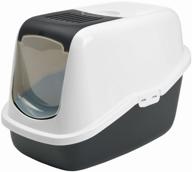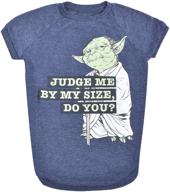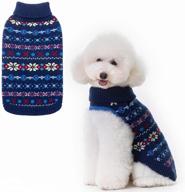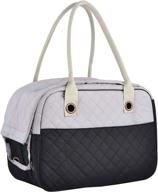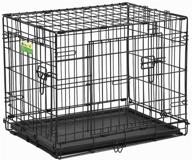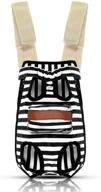How to Choose the Right Size Carrier for Your Pet
Choosing the correct size pet carrier is important for your pet's comfort and safety when traveling. Here are some tips for selecting the right carrier size:
Measure Your Pet
The carrier should be large enough for your pet to stand up, turn around and lie down comfortably. Take accurate length, height and width measurements of your pet in the position they will be in the carrier.
- Measure from the floor to the top of the head while standing.
- Measure from nose to base of tail while seated.
- Measure width across the widest part of their body such as the shoulders.
Allow Extra Room
Add 2-4 inches to the measurements to allow extra space for your pet to move around. Pets may feel anxious in tight spaces.
Select the Right Carrier Size
Use your pet's measurements to select the right size carrier. Make sure to check with airline regulations for any size restrictions.
| Pet Weight | Carrier Size |
|---|---|
| Up to 10 lbs | Small or medium |
| 11-20 lbs | Medium |
| 21-30 lbs | Large |
It's better to err on the side of a carrier being too big versus too small for your pet's comfort.
Test It Out
Have your pet try out the carrier before traveling to ensure they can move around comfortably inside.
Choosing a properly sized carrier will keep your pet safe and comfortable during travels. Always double check airline regulations for any carrier restrictions.
How to Get Your Pet Used to the Carrier
Getting your pet accustomed to a new carrier takes time and patience. Here are some tips to help get your pet used to a travel carrier:
Start Slowly
Initially, place the carrier in a room where your pet spends time and allow them to inspect it. Leave the door open so they don't feel forced inside. Over multiple days, periodically place treats and toys inside the carrier so your pet associates it with rewards.
Practice Steps
After your pet seems comfortable near and inside the open carrier, begin closing the door for very short periods of time while feeding treats and praising them.
- Start with 10 seconds and gradually work up to longer durations.
- Never force or yell at your pet to stay inside. Stay patient and keep sessions positive.
Take Short Trips
Once your pet appears comfortable being inside the carrier with the door closed, take them for short car rides:
- Drive 5-10 minutes to start.
- Slowly increase trip duration as your pet adjusts.
- Always reward good behavior afterwards.
Simulate Travel Day
A few days before traveling, simulate the experience:
- Place your pet in the carrier with a familiar toy or blanket.
- Partially zip or button the carrier and load it in the car.
- Go for a short drive then home to "arrive."
This helps the actual travel day feel less stressful and foreign to your pet.
Be Positive and Patient
Getting a pet comfortable with a carrier requires regular, positive training over time. Remain calm and never force your pet inside. With patience, your pet will be ready to travel in their carrier.
Similar products
How to Prepare Your Pet for Air Travel
Taking a pet on an airplane requires planning and preparation to make the experience safe and comfortable. Here are some tips to get your pet ready for air travel:
Choose a Carrier
Select an airline approved carrier that is well-ventilated and roomy enough for your pet to stand, turn around and lie down. Affix a water bowl inside for hydration access.
Get Health Certificates
Make sure your pet's vaccinations are up to date and obtain a health certificate from your veterinarian within 10 days of travel.
Properly Identify Your Pet
- Place a collar and leash on your pet for identification.
- Line the carrier with a blanket containing your contact information.
- Attach an ID tag securely to the carrier in case you get separated.
Practice Carrier Training
Well in advance of the trip, get your pet used to being in the carrier through positive reinforcement training.
Fast Before Travel
Don't feed your pet for at least 4 hours before the flight to prevent airsickness and needing to relieve themselves mid-flight.
Pack Essentials
Have the following items handy during travel:
- Collapsible food/water bowls
- Super absorbent potty pads
- Plastic baggies for waste
- Favorite toy or blanket
- Pet first aid kit
Proper preparation and training will help ensure your pet has a safe, stress-free flight.
How to Keep Your Pet Comfortable on a Plane
Air travel can be stressful for pets. Here are some tips to help keep your furry companion cozy and calm during a flight:
Choose a Direct Flight
Book a direct nonstop flight when possible to minimize time in the air and avoid layovers.
Request a Good Seat Location
Opt for a seat away from other passengers, near the front, and not too close to loud engines to reduce noise and distractions.
Use Familiar Bedding
Line the carrier with a soft blanket or bed that smells familiar to provide comfort. You can also spray it lightly with Feliway for cats.
Offer Access to Water
Frozen water bottles in the carrier will melt for drinking. Avoid spilling by:
- Using bowls that attach to kennel walls
- Only providing water once at cruising altitude
Keep Your Pet Distracted
Provide safe chew toys inside the carrier and interact with your pet during the flight to keep them occupied.
Avoid Sedating Your Pet
Talk to your vet, but sedatives are typically not recommended as they can affect breathing at altitude.
Use Pheromone Sprays
Adaptil for dogs or Feliway for cats can help reduce anxiety during travel.
Remain Calm Yourself
Your pet can pick up on your stress or anxiety. Stay confident for your pet.
With planning and preparation, you can do your best to help your pet stay cozy, hydrated, and anxiety-free during flights.
How to Clean and Maintain a Pet Carrier
Regular cleaning and maintenance keeps your pet's carrier hygienic and functioning properly for travel. Follow these tips:
Read Product Instructions
Consult your specific airline carrier's cleaning guidelines to avoid damaging it. Some are machine washable or wipeable only.
Clean After Each Use
- Remove any blankets or pads.
- Dispose of waste accidents.
- Wipe down floors, walls and doors with a pet friendly cleaner.
- Clean the outside of the carrier as well.
Deep Clean Often
Sanitize all surfaces at least monthly. Use products like:
- Diluted bleach - Rinse thoroughly after.
- Vinegar - Helps remove odors.
- Baking soda - Helps deodorize.
Check for Damage
Inspect for wear and tear or broken parts before each trip. Look for:
- Cracks in plastic or metal.
- Loose door hinges.
- Torn mesh or fabric.
- Broken clasps or zippers.
Replace Parts
Obtain manufacturer replacement parts for any broken clips, straps or door flaps.
Lubricate Zippers
Keep zippers sliding smoothly by rubbing petroleum jelly or wax paper along them.
Regular cleaning and maintenance insures your carrier remains sanitary, damage-free and travel ready for your pet.
How to Select the Best Features for Air Travel
Choosing a pet carrier with the right features can help make air travel more comfortable for your furry companion. Consider these key factors:
Proper Sizing
Carriers should allow enough room for your pet to stand, turn around and lie down. Measure your pet and opt for a size larger than minimum guidelines.
Ample Ventilation
Carriers with mesh panels, ventilation holes or breathable fabric allow air flow:
- Keeps pets cool on the tarmac and while loading.
- Reduces stress.
Accessible Door
Carriers with tops or sides that fully unzip/unclip provide easier access for you and less struggle for pets entering and exiting.
Padding & Comfort
Padded floors and fleece bedding provide comfort during the flight. Mats or sticky pads prevent sliding.
Leak-Proof Flooring
Carriers with solid or waterproof base layers keep messes contained and simplify clean-up.
Adjustable Shoulder Straps
Padded adjustable straps help securely transport carrier through airports.
Locking Zippers
Locking zippers prevent cage doors from accidentally opening during turbulence or rough baggage handling.
Prioritizing features that keep your pet comfy, secure and properly ventilated is key to reducing in-flight anxiety for both of you.
Another interesting products
How To Choose The Right Size Of Prodigen Pet Carrier For Your Cat Or Dog?
Choosing the right size of Prodigen Pet Carrier for your cat or dog is crucial to ensure their comfort and safety during travel. Here are some tips to help you choose the right size:
Top products in 🐱 Cat Carriers & Strollers


10 Review

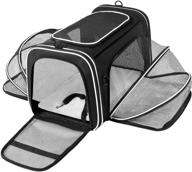

9 Review

What Are The Dimensions Of The Prodigen Pet Carrier For Small Dogs?
The dimensions of the Prodigen Pet Carrier for small dogs vary slightly depending on the source, but here are the most common measurements:
The carrier is designed with a ventilated top to meet all airline regulations of under forward seat. The Prodigen Pet Carrier is recommended for pets up to 15lbs (medium size) or 25lbs (large size) . It is important to measure your pet's length and shoulder height and use their estimated weight as a guide to select the best pet carrier size. Please note that the interior space will be less than exterior due to the fabric thickness and plush faux fleece padding.
What Is The Weight Limit For The Prodigen Pet Carrier For Small Dogs?
The weight limit for the Prodigen Pet Carrier for small dogs varies depending on the size of the carrier. Here are the weight limits for the different sizes:
It is important to measure your pet's length and shoulder height and use their estimated weight as a guide to select the best pet carrier size. Please note that the interior space will be less than exterior due to the fabric thickness and plush faux fleece padding.





